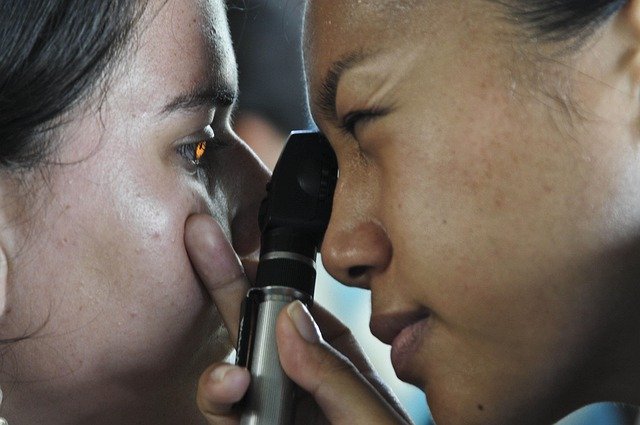Understanding Laser Eye Surgery: Procedures, Costs and Options
Laser eye surgery has transformed vision correction for millions worldwide, offering alternatives to glasses and contact lenses. This comprehensive guide explores the various laser vision correction procedures available, their costs, and what factors influence pricing. Whether you're considering treatment for refractive errors or exploring private eye treatment options, understanding the process and associated expenses helps you make informed decisions about your vision care.

Modern laser eye surgery encompasses several advanced techniques designed to correct refractive errors such as myopia, hyperopia, and astigmatism. These procedures use precise laser technology to reshape the cornea, allowing light to focus correctly on the retina and dramatically improving visual acuity.
Private Eye Treatment Options and Cost Overview
Private eye treatment facilities offer various laser vision correction procedures, each tailored to specific vision problems and patient needs. LASIK (Laser-Assisted In Situ Keratomileusis) remains the most popular option, involving the creation of a thin corneal flap before laser reshaping. PRK (Photorefractive Keratectomy) removes the outer layer of the cornea entirely, making it suitable for patients with thinner corneas. SMILE (Small Incision Lenticule Extraction) represents the newest technique, using a femtosecond laser to create a small lens-shaped piece of tissue that is then removed through a tiny incision.
Private treatment costs vary significantly based on the chosen procedure, clinic reputation, surgeon experience, and included aftercare services. Premium packages often include comprehensive pre-operative assessments, advanced laser technology, and extended follow-up care.
What Influences Cataract Surgery Pricing
While distinct from laser vision correction, cataract surgery pricing factors provide valuable insights into eye surgery costs generally. Surgeon expertise, facility standards, lens implant types, and geographical location significantly impact pricing structures. Premium intraocular lenses with advanced features command higher fees than standard monofocal lenses.
The complexity of individual cases also affects pricing, with patients requiring additional procedures or having pre-existing eye conditions typically facing higher costs. Private healthcare insurance coverage varies considerably, with some policies covering basic cataract surgery while excluding premium lens upgrades.
How Laser Vision Correction is Performed and How Much it Costs
Laser vision correction procedures follow a systematic approach beginning with comprehensive eye examinations to determine candidacy. During LASIK surgery, numbing drops are applied before creating a corneal flap using either a microkeratome blade or femtosecond laser. The underlying corneal tissue is then reshaped using an excimer laser programmed with the patient’s specific prescription. The flap is repositioned, and healing begins immediately without stitches.
PRK involves removing the epithelium completely before laser reshaping, requiring a longer recovery period but offering excellent results for suitable candidates. SMILE procedures create a lenticule within the cornea using femtosecond laser pulses, which is then extracted through a small incision, preserving more corneal structure.
Treatment costs reflect the sophisticated technology and expertise required. Factors influencing pricing include laser equipment quality, surgeon qualifications, clinic facilities, and comprehensive care packages.
| Procedure Type | Provider Example | Cost Estimation (UK) |
|---|---|---|
| LASIK (both eyes) | Optical Express | £2,000 - £3,500 |
| PRK (both eyes) | Moorfields Eye Hospital | £2,500 - £4,000 |
| SMILE (both eyes) | London Vision Clinic | £3,000 - £5,000 |
| Cataract Surgery (per eye) | Spire Healthcare | £2,500 - £4,500 |
Prices, rates, or cost estimates mentioned in this article are based on the latest available information but may change over time. Independent research is advised before making financial decisions.
Recovery and Long-term Outcomes
Recovery experiences vary depending on the chosen procedure. LASIK patients typically experience rapid visual improvement within 24-48 hours, while PRK recovery extends over several days to weeks. SMILE procedures generally offer comfortable recovery with minimal dry eye symptoms.
Long-term success rates exceed 95% for most laser vision correction procedures, with the majority of patients achieving 20/20 vision or better. However, individual results depend on factors including pre-operative prescription strength, corneal thickness, and healing response.
Choosing the Right Treatment Option
Selecting appropriate laser eye surgery requires careful consideration of multiple factors including lifestyle requirements, occupation, age, and eye health status. Consultation with experienced ophthalmologists helps determine the most suitable procedure based on individual circumstances.
Patients should research clinic credentials, surgeon qualifications, and patient satisfaction rates when considering treatment options. Many facilities offer financing plans to make procedures more accessible, though it’s essential to understand all terms and conditions before committing.
Laser eye surgery continues advancing with improved techniques and technology, offering excellent outcomes for suitable candidates. Understanding available options, associated costs, and realistic expectations enables informed decision-making about vision correction treatment.
This article is for informational purposes only and should not be considered medical advice. Please consult a qualified healthcare professional for personalized guidance and treatment.




